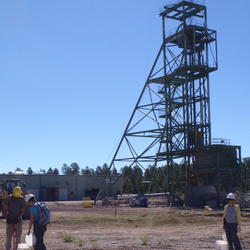Is Uranium in Water Resources near the Grand Canyon a Health Hazard?
Active
By Environmental Health Program
September 26, 2018
Pigeon Canyon in northern Arizona is just north of the Grand Canyon
Here, Pigeon Spring emerges in Pigeon Canyon just before it merges with Snake Gulch in northern Arizona.
Here, Pigeon Spring emerges in Pigeon Canyon just before it merges with Snake Gulch in northern Arizona.
Mountain Sheep Spring, Arizona, is one of the 37 springs
north of the Grand Canyon near areas of breccia-pipe uranium mining that USGS scientists studied
north of the Grand Canyon near areas of breccia-pipe uranium mining that USGS scientists studied



